Western Spain , April 2006
Trip Report: Extremadura and northwestern Spain,12th to 23rd-April 2006
There aren't only birds in Spain, there are Wolves, too!!!
Lutz Lücker - Geneva
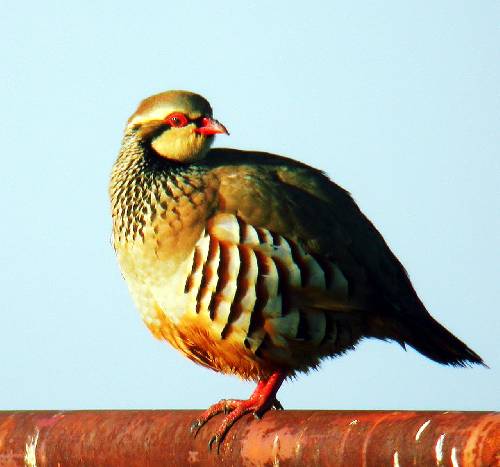
Residence
First nights camping rough , then Hotel Rosales in Malpartida de Plasencia and Motorway Motel El Cruce, 10 kms north of Trujillo between la Aldea and Torrecillas. Had not booked anything in advance, so it was very difficult to find something else. Paid 70 euros for 2 nights (with simple dinner but exquisite wine) in Malpartida. El Cruce: 25 euros per night, noisy (24h service…), food quite expensive for what it was. But room, bathroom and bed ok, better than sleeping in a car on a rainy night.
Maps
Guia Campsa 2000 (1: 300.000) has turned out to be the best. 22 euros for the whole of Spain is a good investment. Alas, the old 200.000 Firestone maps are out of print! But beware! There are (even yellow, numbered) roads on those maps that do either NOT exist, or else are only usable for jeeps, or which are private, fenced country tracks! Anyway, ALL species can be seen from asphalted roads; no need to trespass ! In some steppe areas (La Serena) many tracks that used to be motorable are in a rotten state, quite a few famous signs mentioned in old birders' guides (La Calderuela, La Encinilla…) have disappeared. But the Monfrague park road has just been entirely re-tarmaced. I do not like the layout of the Campsa 2006 edition but there are new roads in it and some corrections have been made.
Introductory remarks (same as in my reports on 2001/03):
Having nothing special to "tick" off (except for Wolves…), my main aim was to get GOOD views of certain raptors and steppe birds. As 90% of the Estremadura is fenced in (NEVER cross a fence with cattle behind; bulls and sheepdogs can be VERY uncooperative!), many birds have a very short flight distance. Some Great bustards (Outarde barbue) may be only
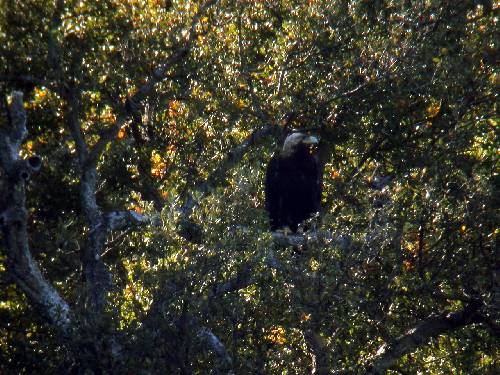
I will not disclose precise locations when there is an accessible nest of an endangered species. One example: one day, there were some British birders picnicking beside their car in the Monroy area, virtually under a Black-shouldered Kite (Élanion blanc)'s nest, the exact location of which had been unwisely published on the internet and a British guide book. Unfortunately, the bird had the bad idea to build its nest in the only unfenced area of the whole district, not far from an unsurfaced but driveable country road. SUCH SENSITIVE INFORMATION SHOULD BE WITHHELD ! There are plenty of other (fenced) places where one can see these birds ! Obviously, the birders had chased the Kite away at did not see it! Serves them right!
During this week, sunrise was at 7.55 – 7.40 h, sunset 20.35 – 21.05 h, so "noon" at about 14.25 h summer time. Few raptors fly before
Weather and season:
Good weather on 12th until noon 15th. During the next days, the weather was a bit cool, with frequent showers, windy, then becoming much warmer on 17th afternoon, dry, warm and less windy. Rain on the night of 20th/21st, then showers and windy until evening of 21st. Much better on 22nd.
Highlights of the trip
Wed 12th:
Spent night at the Estany de Europa in the Aiguamolls reserve near Castello de Ampurdan east of Figueras. Scops owls (Pt.-Duc) calling in the trees, Night herons (Bihoreau gris), Black-winged Stilts (Échasse blanche), Stone Curlew (Oedicnème criard) calling,
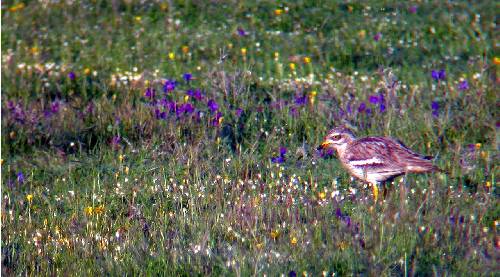
the first Swifts (Martinet noir) and Great Reed Warblers (Rousserolle turdoïde).
Thur 13th:
First Booted Eagle (Aigle botté) near Gelsa (between Lerida and Zaragoza). Arrived at 1.30 pm in the El Planeron steppe reserve between Codo and Quinto/Belchite (E of Zaragoza, about
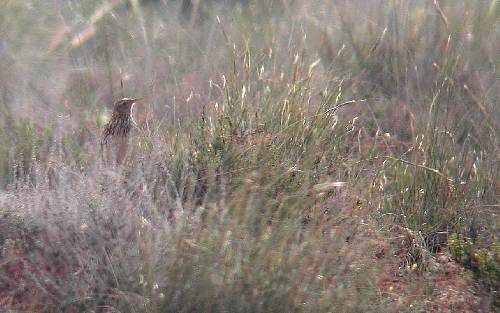
As the roads were all dry, I explored the whole of the reserve until the valley between the table mountains in the north by the quarry. 60+ Griffon Vultures (Vautour fauve), feeding on a carcass by a derelict farm, 2 Egyptian Vultures (Vautour percnoptère), Black-eared wheatear (Traquet oreillard),
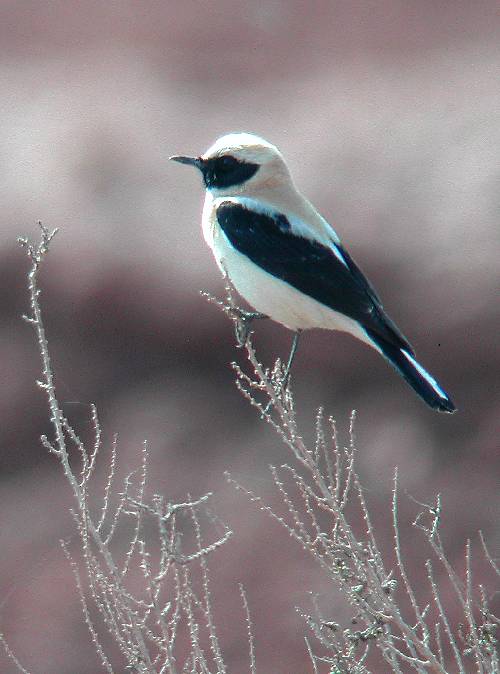
Black-Bellied Sandgrouse (Ganga unibande) (heard twice +
Fri 14th:
Sublime spring morning with Dupont's lark (Sirli de Dupont) showing at 8h10. Off we go towards Madrid. Heavy Easter traffic on the bypass with a traffic jam at the Puerto de Guadarrama tunnel, so I leave the motorway and take the mountain pass. Not a great deal and traffic was quite slow in the village on the other side but it was less bad than before. The weather is turning grey, cool and windy. Back on the motorway…which was nearly empty! 4 Booted Eagles (Aigle botté) along the road near Medina del Campo. I leave the motorway in Villalpando, and a few miles further, there they are, dozens of Great Bustards (Outarde barbue)
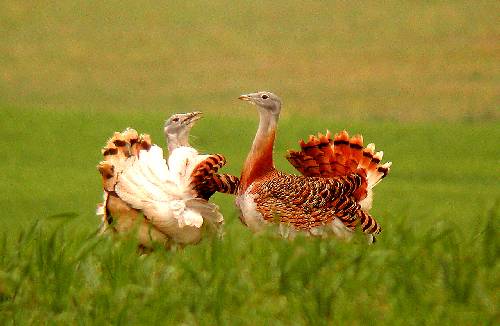
with 3 Little Bustard (Outarde canepetière), Quail (Caille des blés), 2 Montagu's Harrier (Busard cendré), 10 Gull-billed Tern (Sterne hansel) flying after the ploughman, 5 Bee-eaters (Guêpier d'Europe), breeding avocet (Avocette élégante) on one of the lakes near Villafafila, more Black-winged Stilt (Échasse blanche), and many ducks. One Rock sparrow (Moineau soulcie) at the Otero de Sariego pigeon houses.
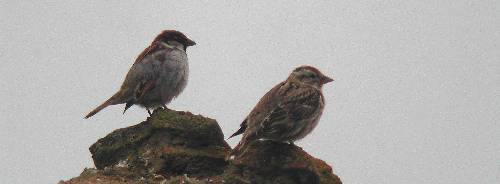
As the weather is getting worse, I decide to spend the night under the roof of a dry hay barn in the fields….
Sat 15th:
Rain all night, and my dry barn has become a prison because there are
Then the sun comes out again and I have a real stroke of luck. Not far from the only motorable gravel lane there are 300+ Great Bustard (Outarde barbue),
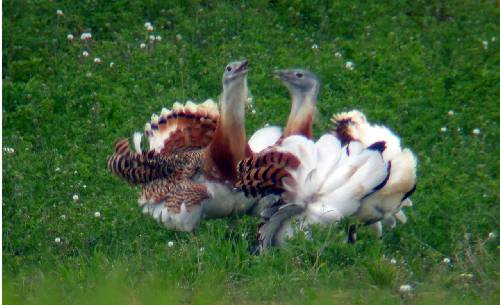
some of which are displaying in the morning light. There are huge groups of middle-aged males that run after each other, fighting and pecking. Unbelievable!
Some Black-bellied Sandgrouse (Ganga unibande) fly by.
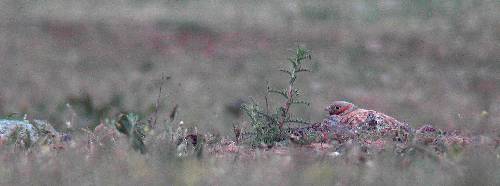
I manage to get some good pictures (from inside the car) and then, after a stopover at the Villafafila lagoons (Gull billed Tern (Sterne hansel) , Redshank (Chevalier gambette), Greenshank (Chevalier aboyeur),
I admit that it may seem somewhat conceited, even foolish, to come along from Switzerland, only knowing the name of a village miles from nowhere and then spend hours sitting somewhere in the woods, waiting for a wolf to come out and show. That is at least what I was told by a Spaniard I met up in the mountains after he had understood what I was doing with a telescope in such a godforsaken place. I only knew that it might be worthwhile to explore a certain forest road…, which turned out to be
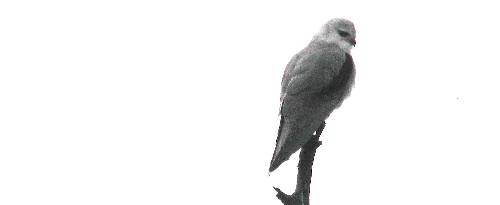
a Hen Harrier (Busard Saint-Martin), a Bee-eater (Guêpier d'Europe), and listening to Woodlarks (Alouette lulu), Cirl Buntings (Bruant zizi) and Rock Buntings (Bruant fou). But no wolf came out of the woods. So I tried tape-recording at nightfall because wolf howls are said to be contagious, but to no avail. The only sheltered place to sleep in the car was a dense pine monoculture with no birds at all. Don't try the few hotels during the Easter week, they are all fully booked!
Sun 16th:
A few sunny spells after cool showers during the night. I wait for the wolves in the same place until
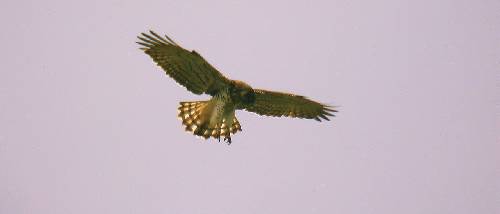
and a stupid immat. Booted Eagle (Aigle botté) misses a very much surprised (sitting) Rock Dove (Pigeon biset) by at least
Mon 17th:
I wake up at night, having heard some doglike noise, no howling, rather some sort of yapping call. I may have been dreaming but I feel a presence in this ugly, synthetic piece of pine woodland. I switch on the tape recorder, no reaction….The rain starts again, back to
Up at 7.15h (luckily, the sun goes up VERY late in the Far West…), breakfast beside the car on the forest road. And half an hour after sunrise, while I am munching away at some soft old Swiss sweetbread, I see something move at the edge of that very pine wood I had been sleeping in. And there they are: one very big Alpha male Wolf , still wearing a fluffy winter pelt, with a much slenderer specimen, idly trotting along a large vegetation-free anti-fire breach between the forest and the maquis! A beautiful sight in the pale morning light. They come closer and closer until I can make out the yellowish colour of their irises. After 5 (or 10?..., frankly, I have no idea) minutes, they suddenly dart at full speed through the dense Maquis, jumping high up to see their prey (which I can't see…). After
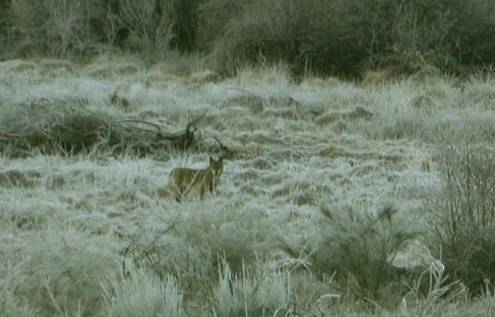
(This photo was taken from http://iberianature.com/material/wolf_watching_sierra_culebra.html)
I wait for another hour and then decide to leave the area, having only 4 days left for this paradise on Earth called Estremadura. But I've made it; I've seen "my" wolves without being guided by locals, just following a hunch and my empathetic feeling. What I am going to see during the rest of my journey will just be considered as a bonus.
More Bee-eaters (Guêpier d'Europe) near Ferreras de Abajo, heavy traffic in Zamora, more jams and rain in Salamanca, lots of lorries with crazy drivers on the road to Caceres but sunny, warm weather on the southern side of the Sierra de Gredos as I arrive at good old Hotel Los Rosales in Malpartida.
As it is still early, I decide to go as far as the Portilla de Tiétar at the northern limit of the Monfrague Park. In or near the Griffon Vulture (Vautour fauve) Colony there is still a nest of both Spanish Imperial Eagle (Aigle ibérique)
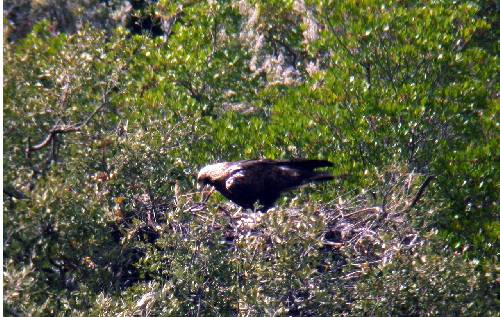
and Eagle Owl (Grand-duc d'Europe); also Black Stork (Cigogne noire) with Black Vultures (Vautour moine) and Short-toed Eagles (Circaète Jean-le-Blanc) that must breed not far away. Lots of small birds in the area: Bee-eaters (Guêpier d'Europe), Bonelli's Warbler (Pouillot de Bonelli), Swift (Martinet noir), Hoopoe (Huppe fasciée), Thekla Lark (Cochevis de Thékla),
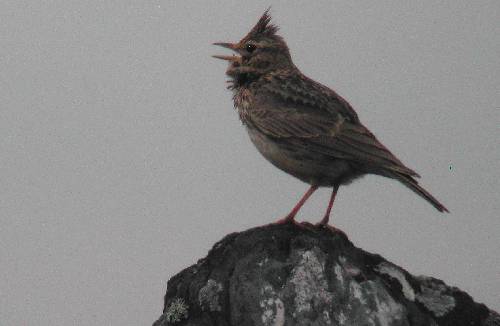
Woodlark (Alouette lulu), Crag Martin (Hirondelle de rochers), Blue Rock Thrush (Monticole bleu), Cetti's Warbler (Bouscarle de Cetti), Dartford Warbler (Fauvette pitchou), Subalpine Warbler (Fauvette passerinette), Red-Backed Shrike (Pie-grièche écorcheur), Southern Grey Shrike (Pie-grièche méridionale),
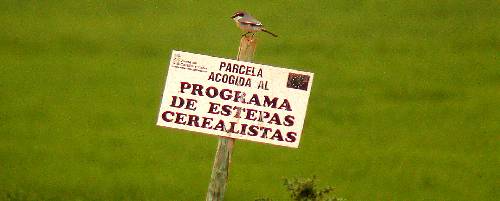
Azure-winged Magpie (Pie bleue), Spotless Starling (Étourneau unicolore), Rock Sparrow (Moineau soulcie),…. I also see many Rock Doves (Pigeon biset), a Sparrowhawk (Épervier d'Europe) and a Montagu's Harrier (Busard cendré).
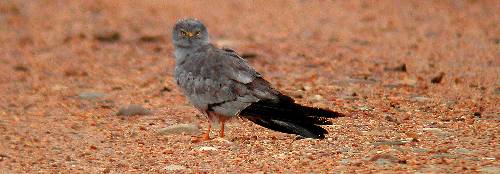
In the evening, two Scops Owls (Petit-duc scops) call in the park opposite the hotel.
Tue 18th:
Early morning start. I try my luck at two Black-winged Kite (Élanion blanc) sites near Malpartida, but they are both deserted. Quail (Caille des blés) in the fields, first Golden Orioles (Loriot d'Europe) singing. A lone Black Stork (Cigogne noire) on the road to Jaraiz, 3 more at the Tietar site. With 3 chicks in the nest! Having driven
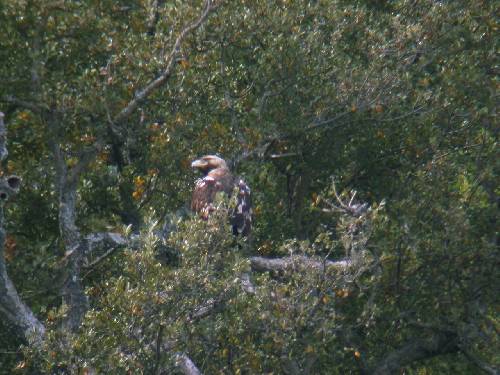
More short-toed eagles (Circaète Jean-le-Blanc), Booted Eagles (Aigle botté), a Bonelli's Eagle (Aigle de Bonelli), two Egyptian Vultures (Vautour percnoptère), Black Vultures (Vautour moine), Red-rumped Swallows (Hirondelle rousseline) and a splendid display flight of Subalpine Warbler (Fauvette passerinette).
Meet my friends Martine and Michel from Switzerland as well as Merilyn and Colin from Northumberland who tell me to look for Otters (Loutres) by the lake near Almaraz nuclear power station (on the Saucedilla road). I find some Otter scat full of Crayfish (écrevisse) bits but no otters. But it is a great birding place. I see several Purple Swamphen (Talève sultane), Marsh Harrier (Busard des roseaux), four times male and female Little Bittern (Blongios nain), Bearded Tit (Panure à moustaches), Gull-billed Tern (Sterne hansel), Great spotted Cuckoo (Coucou geai), Spanish Sparrows (Moineau espagnol) that nest in a White Stork (Cigogne blanche)'s nest on a pylon, purple Heron (Héron pourpré), Great white Egret (Grande Aigrette), Great Reed Warbler (Rousserolle turdoïde), Cetti's Warbler (Bouscarle de Cetti) and hear Savi's warbler (Locustelle luscinioïde) in the reeds.
Wed 19th:
Back to Almaraz, much the same birds as yesterday but no Otters. But there must have been one in the reeds because a dozen Magpies (Pie bavarde) were constantly harassing an invisible animal in the high vegetation. It might have been a fox (renard) but that place was a bit too wet for foxes…!
Drove through Monfrague park, stopped south of the Castillo. Red-billed Chough (Crave à bec rouge), Pallid Swift (Martinet pâle), Booted Eagles (Aigle botté) in the air, Blue Rock Thrush (Monticole bleu) on top, Orphean Warbler (Fauvette orphée) singing in the Cork Oaks.
I leave my luggage at El Cruce Motel and explore the road between Monroy and La Aldea. Very high grass nearly everywhere but I manage to find a flock of 32 Black-bellied Sandgrouse (Ganga unibande) near km 16. Meet Colin& Merilyn (small world!) and we count about 10 Montagu's Harriers (Busard cendré) near the Sta.Marta/ Monroy T-junction.
2 immature Golden Eagles (Aigle royal) fly by,
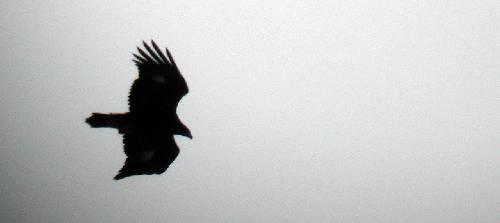
an imm. Spanish Imperial Eagle (Aigle ibérique) is tearing something apart on a lone tree, 3 surprising Whimbrel (Courlis corlieu) feed in a field with Stone Curlew (Oedicnème criard), Little Bustards (Outarde canepetière) and Quail (Caille des blés) calling nearby. And a Little Owl (Chevêche d'Athéna) is sitting by the road in broad daylight.
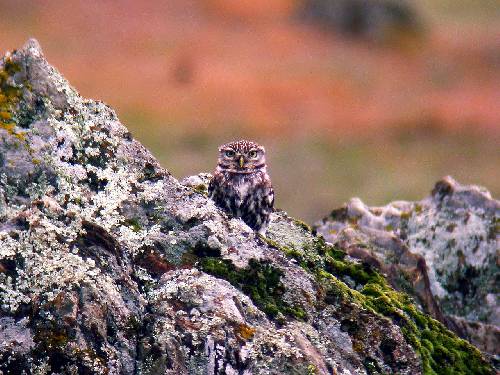
Thur 20th:
Back to the Monroy road. Between kms 13 and 21 I count 100+ Cattle Egret (Gardeboeuf), 20 Black-Bellied Sandgrouse (Ganga unibande), 4+8 Pin-tailed Sandgrouse (Ganga cata) (very scarce this year!), 1 Golden eagle (Aigle royal),
Go to the Belén steppes east of Trujillo at lunchtime. Not a very good moment: only 3 Great Bustard (Outarde barbue), no Black-winged Kite (Élanion blanc), but 80+ Griffon and Black Vultures (Vautour moine),
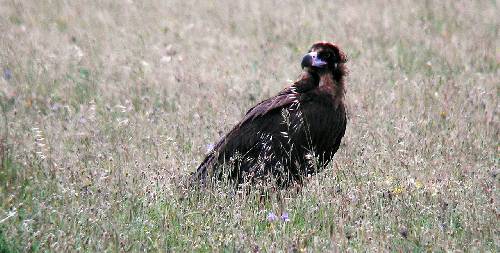
about 140 Cattle Egret (Héron garde-bœufs) with 10 Little Egret (Aigrette garzette) in the tree colony as well as the usual Lesser Kestrels (Faucon crécerellette) on the old farmhouse nearby.
Back to the Monroy road where some obliging German Birders show me a new nest of Black-winged Kite (Élanion blanc), less than
Fri 21st:
Well, my holiday is up, I have to go! Stopover at Almaraz but nothing new except for a Kingfisher (Martin-pêcheur). I'll have to come back to see the Otters!
On my way home I see 2 Rock Sparrows (Moineau soulcie) at the new Madrid-Mostoles toll station. (On a Friday afternoon, one should always take the toll motorways around Madrid to avoid the traffic jams!) I leave the motorway between Lodares, Jubera, Somaen and Arcos (SW of Calatayud) to see if there are any Golden Eagle (Aigle royal) or Red-billed Chough (Crave à bec rouge) in those beautiful gorges. There aren't but I see Griffon Vultures (Vautour fauve), Booted Eagles (Aigle botté), Crag Martins (Hirondelle de rochers),
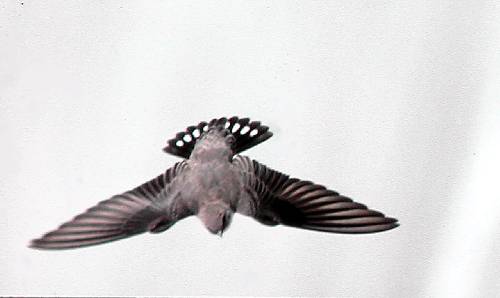
Rock Bunting (Bruant fou), Grey Wagtail (Bergeronnette des ruisseaux) and Rock Doves (Pigeon biset).
As it is very windy around Belchite, I decide to go the whole hog until the Aiguamolls reserve on the Catalan coast near Figueras. I arrive shortly after sunset and see several Purple heron (Héron pourpré), 2 Purple Swamphen (Talève sultane), 10 Whiskered Tern (Guifette moustac), Little Egret (Aigrette garzette), lots of Black-winged Stilt (Échasse blanche), a colony of 100+ Cattle Egret (Héron garde-bœufs) by the river of San Pere Pescador, and a stupid Fallow Deer (Daim) at less than
With more Scops Owls (Petit-duc scops) and Nightingales (Rossignol philomèle) calling in the trees I spend my last night in Spain on the car park of the Visitors' centre. Hope to be back next year!
PS: more photos on my website
http://spaces.msn.com/lutzluecker
Click on "Diaporama" (top right corner), then on "VUE INTEGRALE", then launch the slide show.
Other trip reports on http://louiscrex.skyblog.com
Inscrivez-vous au blog
Soyez prévenu par email des prochaines mises à jour
Rejoignez les 19 autres membres